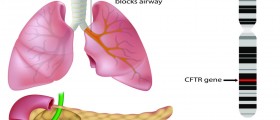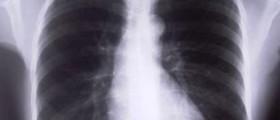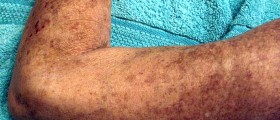
Pulmonary fibrosis is a severe disease that includes development of the excess fibrous connective tissue in the lungs. The more common term for this disease is the scarring of the lungs. This condition develops when the lung tissue becomes damaged and the scars, which form on the lungs, start making it more difficult for lungs to work properly and to supply the blood with oxygen. Scarring of the tissues can be caused by many different things, but whenever doctors aren’t sure what actually causes the changes in the tissues, they are forced to diagnose the condition as idiopathic pulmonary fibrosis. Whatever is the case, pulmonary fibrosis is a chronic disease that cannot be repaired. Therapy is focused only on alleviating the symptoms and improving the patient’s overall quality of life.
Causes of chronic fibrosis
In many cases, pulmonary fibrosis is a side-effect of some other diseases affecting the lungs. Scarring of the tissues may result from various autoimmune diseases, viral infections or small injuries to the lung. Environmental effects and lifestyle habits are also tightly associated with the development of chronic fibrosis. For example, people exposed to asbestos, silicone or certain gasses, are at the higher risk of developing the disease. For certain people, there is an increased environmental or occupational risk of exposure to these substances. For example, people living in old houses, coal miners, ship workers and sand blasters are at the highest risk. Cigarette smoking is also considered a significant risk factor. Medical diseases that may cause scarring of the lungs are connective tissue diseases, infections, Wegener's granulomatosis, sarcoidosis, etc.
Signs and symptoms of chronic fibrosis
Chronic pulmonary fibrosis includes a couple of characteristic symptoms that are relatively easy to recognize as signs that something is going wrong with the lungs. However, the severity of these symptoms may dramatically vary from one person to another. Certain patients may have just moderate symptoms that gradually progress over many months or years. The other patients may become severely ill in a relatively short amount of time. Whatever is the case, chronic fibrosis typically starts with shortness of the breath. However, chest x-ray exam will typically fail to detect that there is something wrong with the lungs. Shortness of the breath is followed by chronic coughing, extreme fatigue and weakness of the muscles, pronounced discomfort in the chest region and very low appetite followed by rapid weight loss.
Recognizing the symptoms on time can help to prevent pulmonary hypertension and pulmonary emboli.

















Your thoughts on this
Loading...